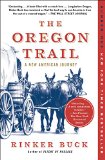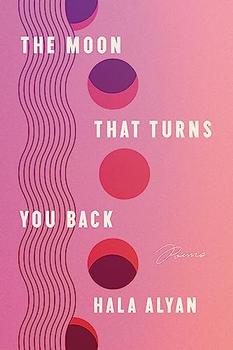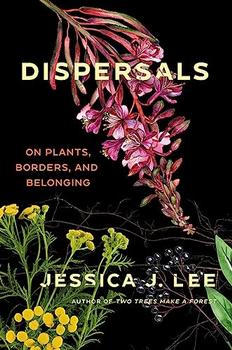Summary | Excerpt | Reviews | Beyond the Book | Readalikes | Genres & Themes | Author Bio

Critics' Opinion:
Readers' Opinion:
First Published:
Jun 2015, 464 pages
Paperback:
Jun 2016, 464 pages
 Book Reviewed by:
Book Reviewed by:
James Broderick
Buy This Book
I was intrigued by one display at the interpretive center, lying flat in a glass case. It was a facsimile reproduction of a journal entry made in May 1850 by an Oregon Trail pioneer from Indiana, Margaret Frink, describing the scene from the rise above the river that I had just left. Today, the Hollenberg Ranch sits on a lonely, deserted spot on the hilly plains, with only the green vastness of the prairie grasses, and the mosaic of yellow and purple flowers climbing the low rises, filling in the view. But Frink's 1850 journal entry described a starkly different place, a scene that could only be imagined 157 years later, looking out over the empty hills.
In the afternoon we came to the junction of the emigrant road from St. Joseph with our road. . . . Both roads were thickly crowded with emigrants. It was a grand spectacle when we came, for the first time, in view of the vast migration, slowly winding its way westward over the broad plain. The country was so level we could see the long trains of white-topped wagons for many miles. It appeared to me that none of the population had been left behind. It seemed to me that I had never seen so many human beings before in all my life.
That was the moment when I first felt the rush of a dream about the Oregon Trail, but the thought quickly passed as I moved on to the other exhibits. They were mostly reproductions of paintings of the Kansas hills during the 1840s and 1850s, when dust billowing up from the wagon trains created a haze all the way to the horizon, collections of old wheel hubs and shards of harness unearthed during archeological digs, and a description of the ranch's use as a Pony Express station and stagecoach stop in the 1860s.
The site administrator from the Kansas Historical Society, an elderly man named Duane Durst, stood behind the counter as I walked through the museum entrance. Duane was talkative and obviously lonely, glad to have some company for the afternoon. He was a retired farmer and feed mill manager from the nearby town of Washington, Kansas, who had spent most of his life studying the patchwork of nineteenth-century "feeder trails" in eastern Kansas that led to the beginning of the main Oregon Trail nearby. This network of roads was called the "junction country" of Kansas, and in many spots near Durst's farm, the remnants of the old wagon ruts are still visible in unplowed pastures and stream crossings. He was exactly the kind of walking database I enjoyed meeting on such a day, and I was quickly drawn in by the details he shared.
The feeder trails that moved northwest through Kansas and then disappeared beyond the Flint Hills all emptied into the original Platte River Road, as it was initially called, the main fur-trapping route to the Rockies that passed through the Arapaho and Sioux tribal lands in western Nebraska in the 1820s and 1830s. Renamed the Oregon Trail in the 1840s, the route spanned some 2,100 miles from jumping-off towns such as St. Joseph and Independence, Missouri, to the Willamette Valley in Oregon, following the great river valleys of the West through five present-day states—Kansas, Nebraska, Wyoming, Idaho, and Oregon. Unlike the image projected in Hollywood westerns, where covered wagons are pulled by attractive teams of matched Percheron and Belgian horses, oxen and mules were the preferred draft animals, Duane told me. Horses require too much forage and they couldn't take the heat and the long stretches between reliable sources of water. Many more immigrants were dispatched by shooting accidents and wagon crashes than were killed by Indians, and the river crossings were often treacherous in the spring, costing many pioneers their lives. But by the fall, families regrouped. At major stopovers like Soda Springs in Idaho, or Farewell Bend in eastern Oregon, the long wagon trains paused while partners widowed by the rivers remarried, and the festivities often lasted for three or four days.
Excerpted from The Oregon Trail by Rinker Buck. Copyright © 2015 by Rinker Buck. Excerpted by permission of Simon & Schuster. All rights reserved. No part of this excerpt may be reproduced or reprinted without permission in writing from the publisher.




To win without risk is to triumph without glory
Click Here to find out who said this, as well as discovering other famous literary quotes!
Your guide toexceptional books
BookBrowse seeks out and recommends the best in contemporary fiction and nonfiction—books that not only engage and entertain but also deepen our understanding of ourselves and the world around us.